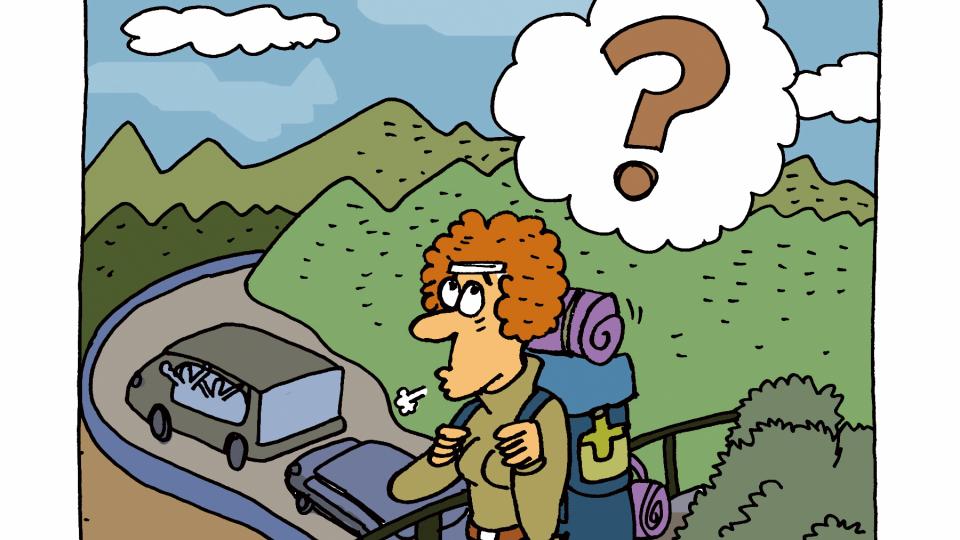Is there any feeling more exhilarating than reaching a mountaintop? I’ve been climbing hills and mountains since I was a little girl holidaying with my parents in America’s Rockies, and the thrill of reaching the peak has never left me. It’s a combination of feelings; a sublime ecstasy at having surmounted nature, a delight at seeing the world spread before you and a relief that things are, quite literally, downhill from here on.
It was the mountains that drew me to China. I went to visit an exhibition in New York’s Metropolitan Museum of Art, showing the exquisitely beautiful paintings of Chinese mountains done by artists of the Ming and Qing dynasties. As soon as I saw them I knew that I wanted to visit. And when an opportunity came up to teach in China for a year, I took it, planning to travel in the holidays. Most of all, I wanted to climb all of China’s “Four Sacred Mountains of Buddhism.”
The mountains didn’t let me down. They were as beautiful as I had seen in the pictures, even if they were more covered in electric wires and asphalt roads than the images in my head. Admittedly, I only made it to three of them, although I hope to finish off the list when I return in the future. But I also made it up mountains with no particular history, though proving spectacular in their own way. I will always remember cresting a peak near Beijing – I have no idea which one – along the Great Wall just at sunset, seeing the red light bathing the hills nearby in a haze perhaps made all the more otherworldly by the pollution.
My students in Shanghai found the idea almost quaint. They thought of going on these kind of trips as something their parents or grandparents did. They wanted to go to Japan or America or Thailand – mostly, as far as I could tell, to go shopping, not for any great cultural quest. There were exceptions. I persuaded a couple of girls to go with me on a hill trip, and after an exhausting day they proclaimed themselves to be “happy, even though we are so tired!”
Yet what I found disconcerting about the sacred mountains was that almost nobody seemed to do what I did; start at the bottom and make my way up. I say almost nobody, but that’s unfair; there were dozens doing the same – but thousands taking the easy route, whether that meant driving up themselves, heading up in a tour bus, or even taking a cable car. Surely the point of a sacred mountain is to climb it, not to drive it? It was like doing Spain’s famous Camino de Santiago –the Road of St. James – by motorbike. Most of the tourists seemed to think that huffing and puffing up a few stairs at the top of a mountain was enough to qualify them as having climbed it.
But I was excited to find that some of the Chinese shared my opinion. On Wutaishan, the most famous of the four, I fell in with a group of Buddhist pilgrims who had traveled from Changsha, in Hunan Province, to make their devotions. The leader of the group, Mr Luo, explained to me his own feelings. “The young people today are soft!” he told me – speaking through his English-speaking 19-year-old granddaughter. “They have everything easy. When I was a child we didn’t even have proper shoes, and we walked to school. So of course when they come to the mountain, they expect it to be easy too. They don’t want to go all the way up on foot; they want to ride to the top as if Buddha himself was lifting them up in his hands.”
“Going to the top of a mountain by car isn’t proper,” he said, sternly. “When you walk on a religious place, you should go by foot. Our ancestors didn’t have cars, just horses, and even then they would never have thought to ride a horse into a temple. But people today are spoilt. Unless they have everything given to them, they think they are being cheated.”
His granddaughter, Amy, looked embarrassed. “I don’t think that is fair of him,” she said afterwards. “Lots of people still have hard lives. And all of us worked so hard at school! But it’s true that my classmates don’t like to go to the countryside. They are even afraid of getting a little dirty!”
Together with Mr Luo’s pilgrimage group, Amy and I sweated our way up that mountain together, though, on a hot weekend – only to find ourselves, at the top, surrounded by people who had driven 90 percent of it. But when we reached the peak, we smiled to ourselves, thinking that however hard a time we had of it, it had made the summit even sweeter. “Now,” said Mr Luo, “We can all have a drink.”

 Old Version
Old Version